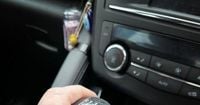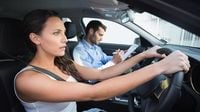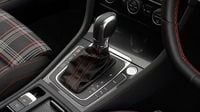Across Great Britain, a quiet revolution is taking place behind the wheel. For the first time, one in four driving tests are now being taken in automatic cars, new data from the Driver and Vehicle Standards Agency (DVSA) reveals. The figures, covering England, Scotland, and Wales, show that in the 2024/25 year, 470,000 of the 1.8 million driving tests were conducted in automatics—representing 26% of all tests. That’s a remarkable leap from just over a decade ago, when only 6% of tests were in automatics, according to DVSA records cited by the BBC and Auto Express.
The shift is more than just a statistical quirk—it’s a sign of deeper changes in the UK’s motoring landscape. As electric vehicles (EVs) surge in popularity and the government’s 2030 ban on new petrol and diesel cars draws nearer, the once-ubiquitous manual gearbox is losing its grip on British roads. The AA, one of the country’s largest motoring organizations, says the trend is accelerating. Emma Bush, managing director of the AA Driving School, told Auto Express, “With more people becoming confident with the idea of their driving future being electric, the idea of needing to drive a manual vehicle will feel irrelevant to many.”
Indeed, the numbers back this up. In 2012/13, only 87,844 tests—about 6%—were conducted in automatics. By 2024/25, that number had ballooned to 479,556, or 26% of all tests. The AA predicts that by 2025/26, 29% of all driving tests will be taken in automatics, and by 2027, over a third could be automatic, according to estimates reported by Auto Express. The trend is even more pronounced when considering the types of cars on sale today. A recent investigation by Auto Express found that just 19% of new cars are offered with manual gearboxes, a dramatic decline from past decades.
Why the change? The answer, experts say, is largely about electric vehicles. EVs, by their very design, do not require manual gearboxes. As the UK edges closer to its ban on the sale of new combustion-engine cars in 2030—a policy restored by the Labour government after it had been delayed to 2035 by former Prime Minister Rishi Sunak—drivers are increasingly preparing for an electric future. “As we head closer to 2030 and the ban on the sale of new combustion cars, more and more learners will want to learn in an electric vehicle because that’s all they will plan to drive,” Bush explained to the BBC.
Learning to drive in an automatic car does come with a caveat. Those who pass their driving test in an automatic receive a Category B Auto licence, which restricts them to driving vehicles with automatic transmissions only. If they want to drive a manual, they’ll need to retake the test in a manual car. But for many, that’s a restriction they’re happy to accept. As Bush put it, “the need to know how to drive a manual car is becoming irrelevant to many learners.”
Driving instructors are also noticing the shift—and they’re not lamenting the decline of the clutch pedal. Sue Howe, who runs Sue’s Driving School in Swindon, told the BBC that automatics are “the way forward” as the car industry moves toward EVs. For learners, automatics can make the test less daunting. “There’s just a lot less to do,” Howe said. Inexperienced drivers can “wreck a gearbox and a clutch,” she added, noting that nerves can cause them to stall or cut out the engine. The result? “It just makes life so much easier—it’s less work for the driver to do so they can concentrate more time on the road.”
There are safety benefits too, Howe argues. “People are less tired” when driving an automatic, she told the BBC. With less to juggle in terms of gear changes and clutch control, drivers can devote more attention to what’s happening on the road—a potential win for road safety.
The cost of going electric remains a factor for many, but the equation is shifting. While EVs are still more expensive upfront than comparable petrol or diesel cars, the gap is narrowing. According to the AA, EV owners can expect to save money on fuel and maintenance costs, making them an increasingly attractive option in the long run. The lower day-to-day running costs of EVs and hybrids are drawing in more learners, Bush said, especially as the market for manual cars shrinks and the second-hand value of automatics rises.
Demographics are shifting as well. Historically, more women have opted for automatic tests, but the proportion of men choosing automatics is rising fast. In 2012/13, just 23% of learners taking automatic tests were men; by 2024/25, that figure had jumped to 39%, according to DVSA data cited by the BBC and Auto Express. The overall pass rate for automatic tests remains slightly lower than for manual tests, but the gap has narrowed since 2012—a sign, perhaps, that as automatics become the norm, learners are adapting quickly.
Still, some traditions die hard. For now, a full driving licence in Great Britain still requires passing the test in a manual car, if you want the freedom to drive both types. Northern Ireland, it’s worth noting, issues its own driving licences and follows a separate system.
The rapid rise in automatic tests is not just a British phenomenon, but it’s especially pronounced here due to the upcoming regulatory changes and the country’s ambitious push toward electrification. The AA’s forecasts suggest that the days of the manual gearbox are numbered—at least for new drivers. As more electric cars hit the roads and the 2030 ban on new petrol and diesel cars approaches, the humble clutch pedal may soon become a relic of motoring history.
For now, though, the choice remains. Learners can still opt for the challenge (and flexibility) of mastering a manual, or they can embrace the simplicity of automatics and prepare for a future that’s increasingly electric. Either way, the next generation of British drivers is steering the country firmly into a new era—one with fewer gear changes, less stalling, and, perhaps, a bit more time to enjoy the ride.



